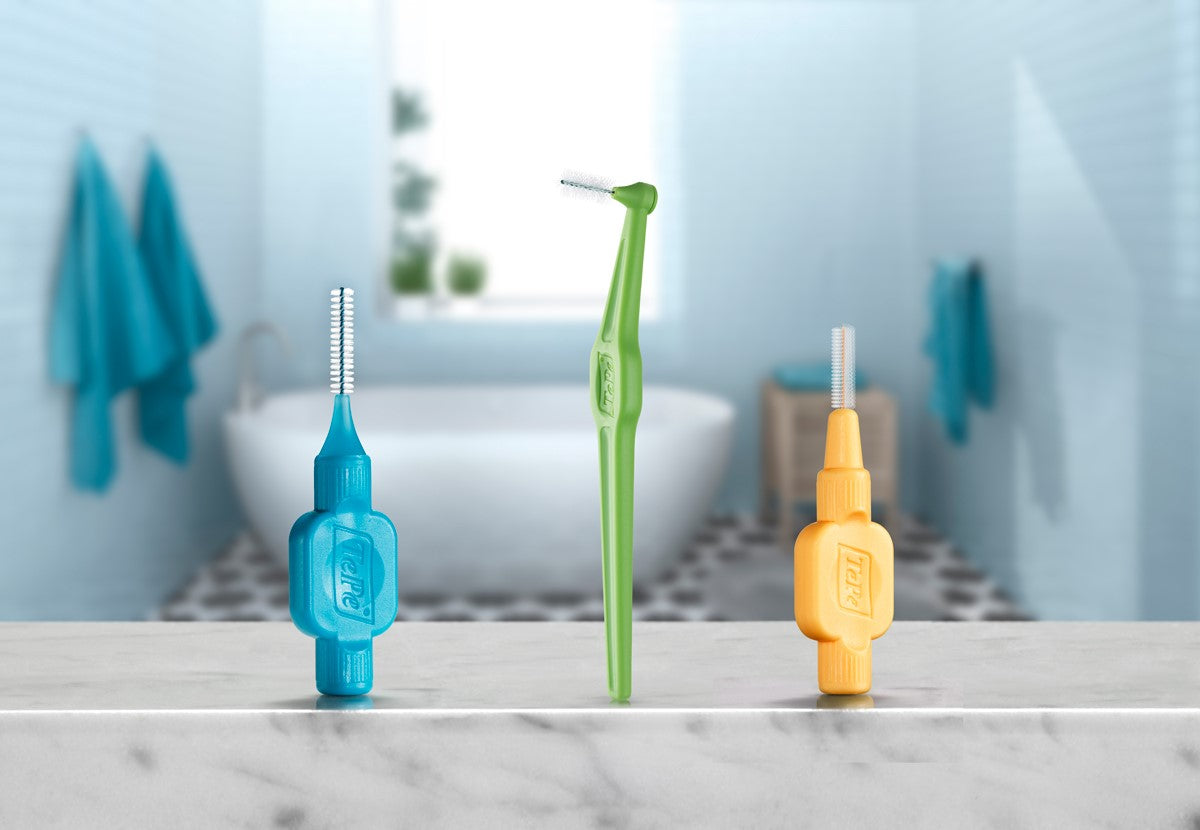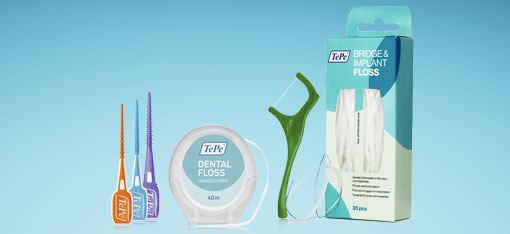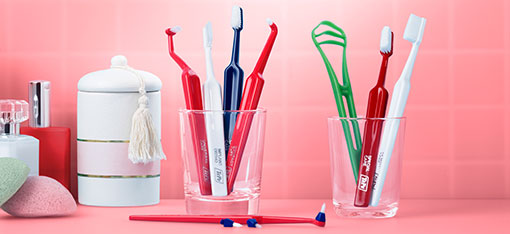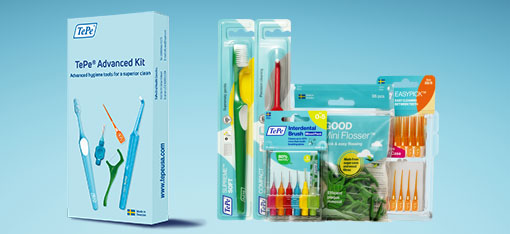Gingivitis & Periodontal Disease
A common disease
Around 40% of all adults suffer from periodontitis – often without knowing it. The disease develops slowly and often without pain or visible signs. The sooner it is diagnosed and treated, the better.

Healthy gums
Healthy gums are pale, pink and firm. The gum tissue covers the bone and fits firmly around the tooth like a collar. There is no bleeding when you brush or clean between your teeth.

Gum inflammation
An inflamed gum tissue is characterized by redness and swelling. The gums may bleed when you brush or clean between your teeth.
Small fibers, the periodontal ligament, hold the tooth in its socket. The gum tissue covers the bone and fits firmly around the tooth like a collar. The small crevice between the tooth and the gum tissue forms the gingival sulcus.

A sticky film, bacterial plaque, constantly forms on your teeth. If you don't clean properly, plaque will be left behind, especially between the teeth and along the gum line. When plaque accumulates in these areas it causes gum inflammation (gingivitis). Inflamed gum tissue is characterized by redness and swelling. The gums may bleed when you clean your teeth.
Periodontitis

If the plaque is not removed, it grows in the crevice between tooth and gums (the gingival sulcus). On the root surface of the tooth, the plaque hardens into tartar, which has a rough surface where bacteria attach even easier.
As the supporting bone gradually breaks down, the tooth loses more and more of its attachment. The gum inflammation has developed into periodontitis.

It is a slow process, often unnoticed and without pain. To arrest the loss of attachment, professional treatment is mandatory. Untreated, the bone loss will continue to progress. In time the tooth will become loose and in the worst case may be lost. Smoking , heredity and some systemic diseases are factors that may enhance the risk of developing periodontitis
Prevention and treatment
You can do a lot yourself to prevent and reverse periodontal disease through proper oral hygiene. Brush your teeth twice a day. Once a day, also clean between the teeth using interdental brushes, dental sticks, Mini Flosser or dental floss. A special toothbrush for cleaning hard-to-reach areas may also be needed. Ask your dentist or dental hygienist for advice and instruction.
If you suspect gum inflammation, contact your dental professional. The cooperation between you and your caregiver is of utmost importance for a successful result, even after treatment is completed. Regular checkups in combination with your own home care are crucial to prevent the problems from returning.
Informational Material
Download our patient leaflet Gum inflammation and periodontitis.












